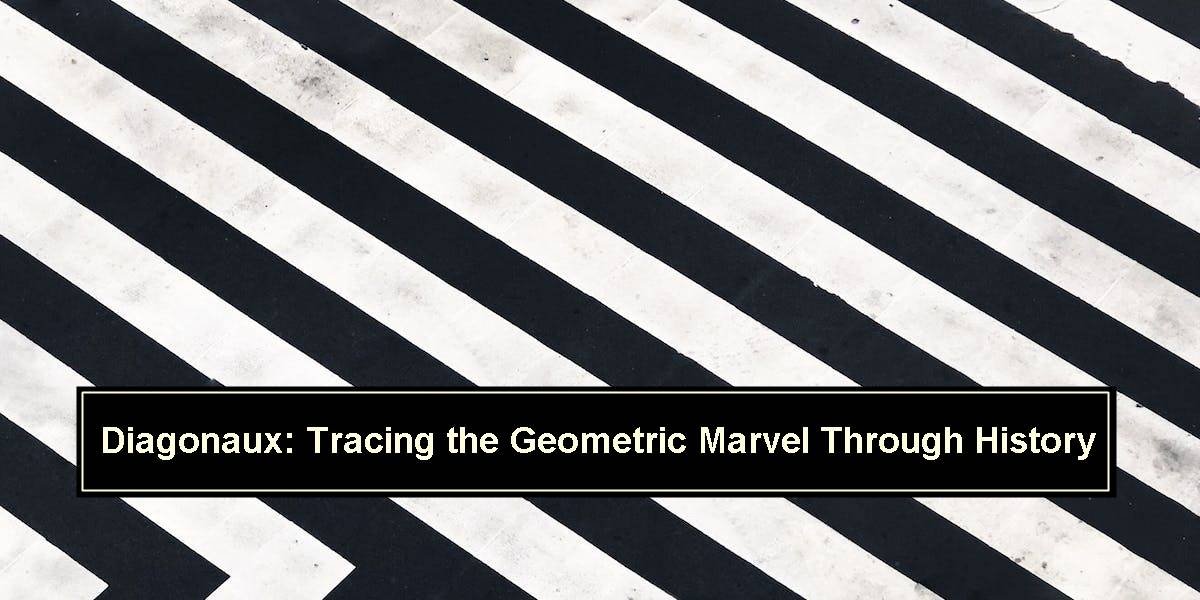In the expansive realm of aesthetics and design, “diagonaux” is a captivating and prominent concept. This article delves into the subtleties of diagonal, emphasizing its origins, significance, and typical applications.
The Origin of Diagonaux
Revealing the Geometric Marvel
Diagonaux can be described as a captivating geometric element, representing any design pattern comprising diagonal lines. These patterns appear in various permutations and combinations, infusing a fresh and dynamic aesthetic.
A Historical Perspective
Tracing Diagonal Patterns Through Time
To grasp the essence of diagonal, we must journey back in time to trace its historical roots. Evidence of diagonal patterns in art and architecture dates back to prehistoric times, with zigzag motifs found on ancient Egyptian pottery and diagonal supports employed in Roman construction.
Diagonaux in Fashion
Strutting the Diagonal Runway
Diagonal has rapidly gained recognition in the fashion world for its eye-catching designs. Fashion designers incorporate elegant outfits featuring diagonal patterns to add dimension and style, gracing runways worldwide.
READ ALSO: Oxygen: Wonders The Life-Sustaining Element Unveiled
The Power of Illusion
Optical Illusions Through Diagonaux
Beyond fashion, diagonal plays with optical illusions, making individuals appear taller, thinner, or curvier based on the placement of diagonal lines. Fashion designers embrace these illusions, making diagonals a trendy choice in fabric design.
Diagonaux in Art
Painting with Diagonals
Diagonaux plays a pivotal role in visual art, with artists using diagonal lines to convey energy and motion in their paintings. It serves as a highly expressive tool for artists seeking creativity and dynamism.
Modern Interpretations
Contemporary Explorations of Diagonaux
Contemporary artists push the boundaries of diagonals through abstract and experimental techniques, exploring new dimensions of art. Diagonal offers diverse creative possibilities for artists.
Diagonaux in Architecture
Architectural Elegance Through Diagonal
The allure of diagonals has captivated architects throughout history. Using diagonal supports and patterns enhances the stability and elegance of architectural designs. Iconic places like the Eiffel Tower and Sydney Opera House owe part of their timeless beauty to diagonal elements.
Sustainability and Diagonaux
Diagonal in Sustainable Practices
In the realm of modern design and construction, sustainability is paramount. Diagonal patterns are leveraged to boost energy efficiency, incorporating innovative sun shading and ventilation techniques. Dia-gonaux not only enhances building aesthetics but also contributes to eco-friendly practices.
Diagonaux Beyond the Physical
Exploring Digital Diagonal
Once confined to the physical world, diagonal has found a place in the digital realm. It goes beyond drawing lines on paper and fabric, serving as a tool for creating striking digital images. Graphic designers and digital artists harness the capabilities of diagonal to craft eye-catching visuals.
Diagonaux in Branding
The Role of Diagonaux in Brand Identity
Diagonaux plays a significant role in branding due to its psychological impact, symbolizing vitality, creativity, and vision. Successful brands incorporate diagonal lines in their logos and branding to stand out.
Conclusion
Diagonaux, a dynamic concept in aesthetics and design, has a rich history dating back to prehistoric times. It has left its mark on fashion, art, architecture, and branding, thanks to its versatility. In the digital realm, it continues to inspire graphic designers and digital artists. It also plays a role in sustainability and energy-efficient design, making it more than just an aesthetic choice. Its use in branding symbolizes creativity and vision. This versatile concept continues to shape the world of design and aesthetics.
